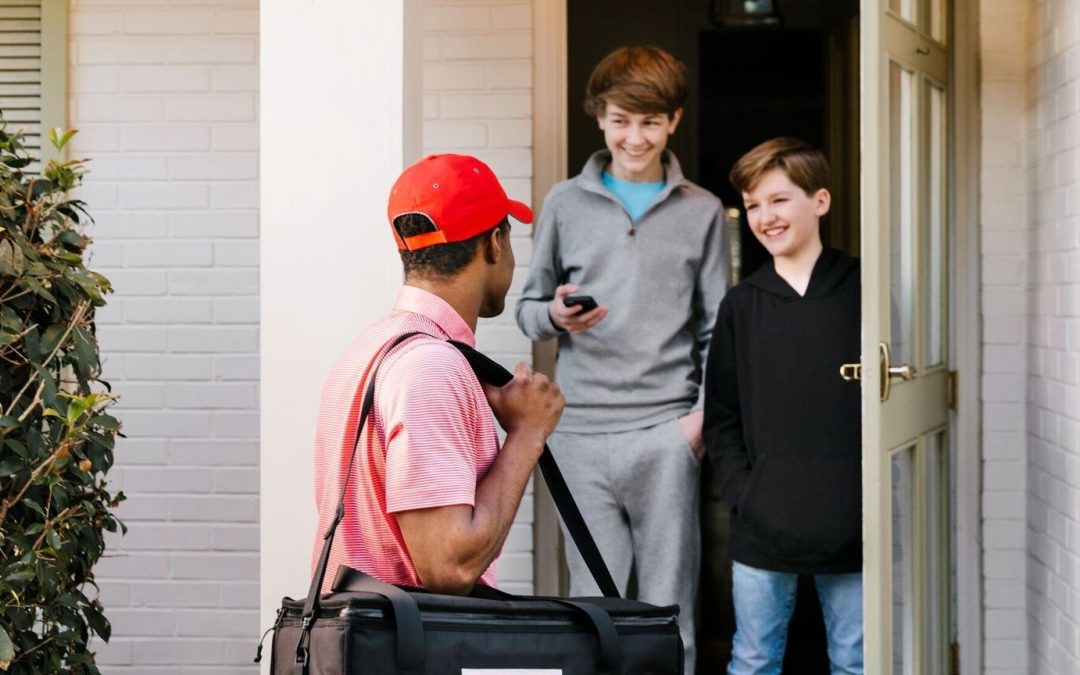Phase Change Solutions, a manufacturer of green building materials and the company behind the Domino’s HeatWave bags, says the technology to improve restaurant delivery is fired up and ready to go, if only the third-party delivery providers would spring for the upgrade.
 “We would love to create programs for the third-party delivery guys,” said Phase Change President and founder Byron Owens. “Our hope is the more information that we’re able to put out and market, that someone wants to be first to market with that idea and tear the Band-Aid off.”
“We would love to create programs for the third-party delivery guys,” said Phase Change President and founder Byron Owens. “Our hope is the more information that we’re able to put out and market, that someone wants to be first to market with that idea and tear the Band-Aid off.”
Talk that the big delivery providers aren’t willing to equip their drivers with insulated bags solely for economic reasons is largely speculative, but it’s remarkable that so many restaurant meals are still delivered in paper or plastic bags at worst or a low-quality insulated bag when advanced technology could do a much better job keeping foods in their respective sweet spots.
With such a large portion of the restaurant business shifting to off-premises channels in recent months, the North-Carolina-based company thinks the federal government might eventually call the question in the name of food safety standards.
“So many companies are just delivering without even an insulated container, and they’re just moving food because, I guess, the demand has been that high, but I think there’s going to have to be some regulation that’s going to help on the safety side of this equation,” Owens said.
With a long history that includes innovations like those insulated casserole dishes that were popular on infomercials, as well as custom projects with other mega pizza brands and Chick-fil-A over the years, Phase Change Solutions is seeking a larger part of the U.S. restaurant delivery business with technologies for both hot and cold items.
Its moniker comes from the advanced phase changing technologies that absorb and release large amounts of thermal energy while melting and freezing. When these materials freeze, they release latent heat at a relatively constant temperature. When they melt, those same materials absorb heat.
As green building technologies gain steam across the planet, such materials have found applications regulating temperatures inside telecom boxes and in commercial, industrial and residential applications to keep people and products closer to ideal temperatures without traditional heating or cooling technologies that tend to require significant amounts of electricity.
The company also manufacturers more traditional, electrically-driven products, like heated delivery bags that have been deployed by scooter-based delivery drivers outside of North America.
While such a solution might look ideal on paper, there are significant limitations in food delivery settings, as the phase morphing material can only work their magic one time before needing to be effectively reset or brought back to their original state. Keeping frozen foods cold throughout an eight-hour delivery shift is especially challenging, Owens added, without using traditional freezer technology that requires significant amounts of energy and is prone to mechanical failures.
While Owens suggested economics were the primary barrier to third-party delivery brands adopting phase changing materials, he added that legal concerns might be another factor as ride-sharing and delivery brands fight ongoing battles to keep their drivers as independent, contracted workers rather than traditional employees.
“If they tell their employees what they have to do and when they have to show up, then they can constitute that they are an employee,” Owens said. “There’s been a tug of war and positioning on this and giving, for example, a Grubhub the equipment to mandate to their drivers that you will use this product is another gate that the courts could use against them.”
To get around such potential hurdles, Phase Change is also considering leasing its technology to delivery drivers themselves, taking out any capital expenditure concerns for the delivery companies.
However that strategy pans out, the company is also watching the federal government for signs they may step in with additional food safety regulations for food that leaves the restaurant in a delivery driver’s hands. While nothing has been made official, Owens speculated that such a move is inevitable from his standpoint.
There are compromises happening every day,” he said. “There’s a lot of tightening up inside the restaurant, why are we not paying attention to what goes out when it’s now by the billions of food movements that’s happening outside of restaurants today?”


